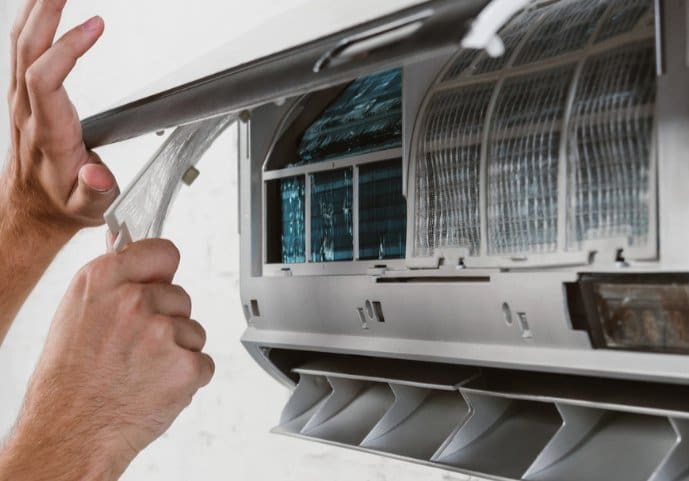
As a homeowner, you are always looking for ways to improve the comfort and functionality of your living spaces. Paying attention to your heating and cooling system is key to assisting you in getting the most energy efficiency and comfort out of your home. One innovative solution that has been gaining popularity in recent years is the mini-split system for heating and cooling.
In this comprehensive guide, we will explore what a mini-split system is, the benefits of having one installed in your home, and how it can be used to heat and cool upstairs bedrooms or basements effectively. We will also discuss whether it is possible to combine a ductless mini-split system with a traditional heating and cooling system, signs that you may need to add a mini-split to your home, and much more. This knowledge allows you to have the most proactive approach to installing or upgrading your HVAC system.
What is a Mini-Split System?
A mini-split system is a type of heating and cooling system for both commercial and residential properties that doesn’t use a more common ductwork system to distribute air throughout a home. It’s commonly referred to as a ductless HVAC or split system. Mini-split systems are comprised of an outdoor compressor unit and one or more inside air-handling parts that cycle heat and cooler air into the home. These units are usually mounted on the wall or ceiling and don’t take up much room. These units are connected by a special conduit that houses the refrigerant lines, power cable, and condensate drain. You can install one or more mini-splits in your home, allowing you to efficiently cool or heat rooms in the home where a traditional heating and cooling system may not reach. If you don’t want to install multiple thermostats in your existing HVAC system, mini-splits can be a terrific alternative.
Benefits of Mini-Split Systems
There are numerous benefits to having a mini-split system installed in your home, including being able to customize where the mini-split system is installed (either for budgetary or space reasons). One of the main advantages is their energy efficiency, as they do not suffer from the energy loss associated with traditional ductwork. Mini-split systems also allow for zone heating and cooling, meaning you can adjust the temperature in individual rooms or zones to suit your
preferences. Additionally, mini-split systems are much quieter than traditional HVAC systems, providing a more peaceful and comfortable living environment.
Using Mini-Splits in Upstairs Bedrooms or Basements
Mini-split systems are particularly well-suited for heating and cooling upstairs bedrooms or basements. These areas tend to be harder to reach with traditional ductwork, especially if the ducts are very wide and have inefficient airflow to the second and third floors or basement areas. This makes these rooms more prone to temperature fluctuations, so they’re not only not as comfortable as they should be, but they’re also inefficient to heat and cool.
By installing a mini-split system in these spaces, you can ensure consistent and comfortable temperatures year-round. Additionally, mini-split systems are easy to install in these areas, as they require minimal disruption to walls and ceilings. The main components of a mini-split system are outside, so they also don’t take up a ton of room in these spaces.
Combining Mini-Splits with Traditional Systems
In some cases, it may be beneficial to combine a ductless mini-split system with a traditional heating and cooling system. This can help to supplement the existing system, provide additional heating and cooling capacity, or improve energy efficiency. It’s a common technique done on homes that have expansions when the homeowners don’t wish to install a second heating unit. By using both systems in tandem, you can create a more comfortable and cost-effective indoor environment that is fully customized to your needs.
Signs You May Need a Mini-Split System
There are several signs that may indicate it is time to add a mini-split system to your home, especially if you’re upgrading your HVAC system and wish to know your options for a multi-level home. If you are experiencing uneven temperatures throughout your home, have high energy bills, or have difficulty maintaining a comfortable indoor environment, a mini-split system may be the solution. Additionally, if you are renovating or adding an expansion to your home, a mini-split system can provide efficient heating and cooling for the new space without the need for extensive ductwork.
Mini-split systems offer a flexible and efficient solution for heating and cooling your home. Whether you are looking to improve the comfort of upstairs bedrooms, basements, or other hard-to-reach areas, a mini-split system can provide the perfect solution. By understanding the benefits of mini-split systems, how they can be used in conjunction with traditional systems, and the signs that indicate you may need one, you can make an informed decision about whether a mini-split system is right for your home.
Contact us to learn more and find out if a mini-split system will work for you!
